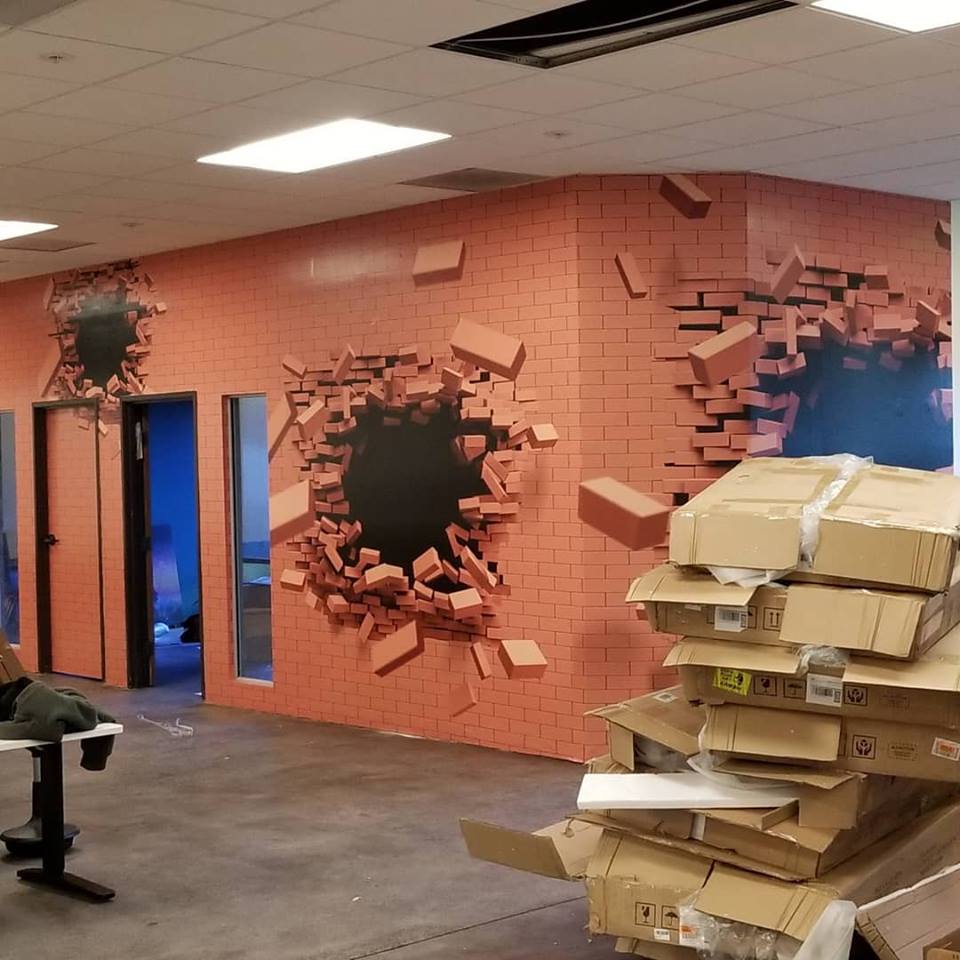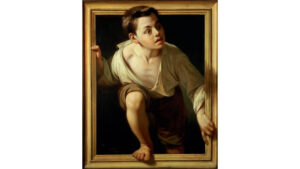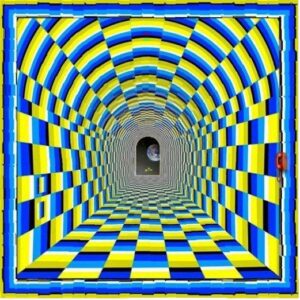Optical art: Aesthetics playing tricks

Optical art plays with the dizzying and mind-altering world of optical illusions, as wavy lines, pulsating forms and rhythmic patterns
“From different perspectives, these will look like just some random strokes of art, but viewed from a particular point, be prepared for some stupendous optical illusions,” says Mohak Pandit, a 35-year-old optical artist based in Delhi.
The artform that Pandit is skilled at, namely optical art, plays with the dizzying and mind-altering world of optical illusions, as wavy lines, pulsating forms and rhythmic patterns come to life before one’s eyes. He says that optical illusion art, or op art for short, is an aesthetic style that intentionally exploits that oddity of human perception that gives the eye the ability to deceive the brain.
Development of optical art

Escaping Criticism, painted in 1874 by Pere Borrell del Caso shows a hyper-realistic image of a child climbing out of a picture frame
Pandit says that he was drawn to optical illusions because it questions one’s perception. “By manipulating patterns, shapes, colours, materials and forms, op artists strive to create phenomena that fool the eye, confusing viewers into seeing more than what is actually there. And since belief can be as influential as fact, op art asks the question of what matters more: perception or truth,” he says.
Geeta Iyer, a Chennai-based artist who is also known for the optical illusions in her paintings, especially street art, explains the history of optical art.
According to her, op art has its roots in a technique called trompe l’oeil, which is French for ‘tricking the eye’. The earliest references to such tendencies in art date back to a time when ancient Greek artists attempted to make paintings so realistic that people would literally be fooled into believing their images were real. “The technique has subsequently gone in and out of fashion numerous times throughout the centuries, hitting its stride in the 19th Century with trompe l’oeil paintings like Escaping Criticism, painted in 1874 by Pere Borrell del Caso, which shows a hyper-realistic image of a child climbing out of a picture frame.
Modern forms of art
Not only has optical art become popular in art galleries and painting exhibitions, but people have also started decorating their homes, restaurants and hotels with such paintings and art forms. “These pieces are sure to attract one’s attention and people will definitely pause and admire the work,” says Pandit.
The artists say that the op art today is more often abstract, relying on geometric compositions to convince the eye that unreal forms and spatial planes exist.
“MC Escher, Dali and Duchamp were old champs at the art of visual manipulation, but modern-day artists are digitally and traditionally creating cognitive illusions that force a double-take. Flat surfaces are turned cavernous with coloured chalk, simple graphics are laced with hidden images and ordinary photos are turned into surreal landscapes,” explains Iyer.
Market and price
Artists believe that the value of a work of art is determined by the degree to which a viewer may participate in its completion. “The aesthetic phenomena adapts to each new viewer, creating unlimited interpretive possibilities,” Iyer further explains.
Pandit agrees with Iyer but also adds a few limitations to optical art. He goes on to say that sometimes, in an art exhibition, people like a particular painting and it sells for about INR 2-3 million, but sometimes, if it does not attract a crowd, even the most precise illusion does not get noticed. “Now, as good as it is for artists to put a price to one’s work, on the downside, sometimes because of less light, or placement at an angle from where the illusion does not look that impressive, causes our artwork to remain unsold too,” says Pandit.
“The important thing is that if you stay careful, even a little illusion boggles the people’s mind. Most often, people get fascinated very easily with the work and get impressed. Receiving a compliment from art admirers that my work is not just aesthetic but also very intelligent, is the best thing that can happen to artists like us and that is what keeps us going,” he adds.
They further say that optical illusions in public places is a huge phenomenon in western countries and is still struggling to catch up in India. “We hope that in years to come, we will expand our art to walls, streets, floors at public places too. They already do that in the West and almost in all parts of the world, people have been happily surprised by the artwork. I hope we take it out from galleries to the roads,” says Iyer, who is busy on a few paintings that are supposed to decorate the walls of a newly-opened restaurant in Chennai.










